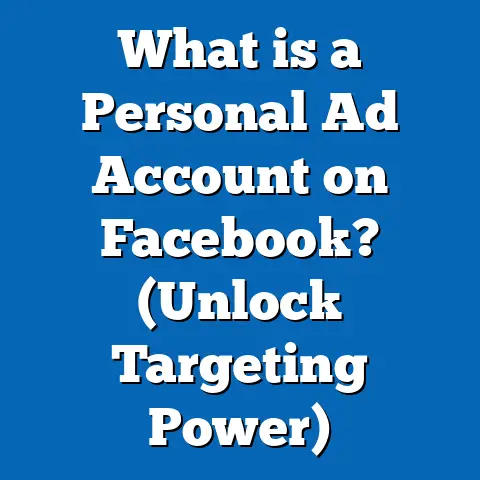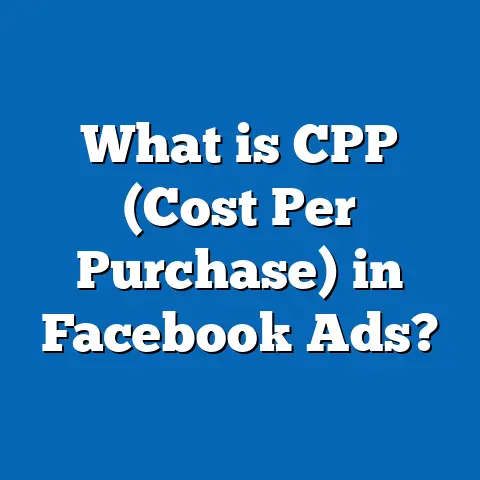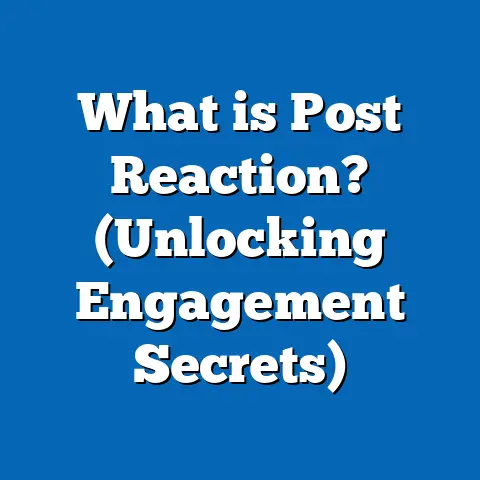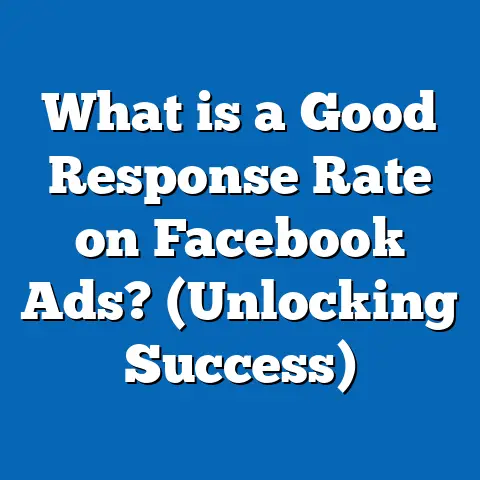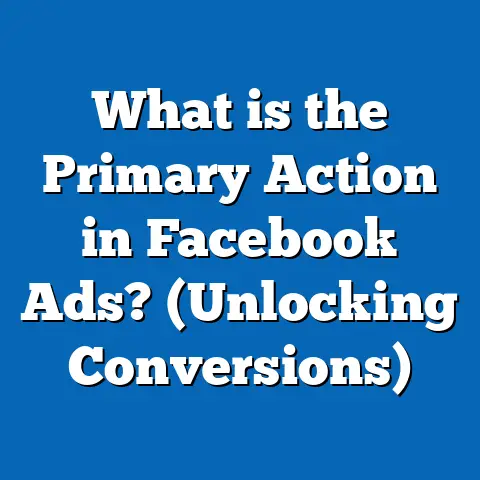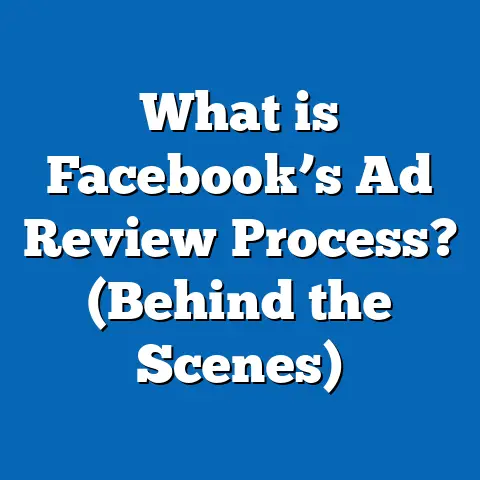What is Conversion in Facebook Ads? (Unlocking Success Metrics)
Introduction: The Ease of Cleaning and the Power of Conversion in Facebook Ads
Imagine the ease of cleaning a room with the right tools—efficient, quick, and leaving no dirt behind. When you have the proper vacuum cleaner, cleaning becomes less time-consuming and more effective. Similarly, running Facebook ads without understanding conversion metrics is like cleaning without the right tools: you may be busy but not effective.
Conversion in Facebook advertising is the ultimate measure of success. It shows whether your campaigns are achieving their primary goal—turning ad viewers into paying customers or engaged users. As marketing professionals and business owners, mastering conversion means gaining control over your ad spend and maximizing your return on investment (ROI).
What is Conversion in Facebook Ads?
Understanding Conversion: The Core Concept
In digital marketing, a conversion happens when a user completes a desired action after interacting with an advertisement. On Facebook, this action can vary widely depending on your campaign objectives and business goals. Typical conversions include:
- Purchases: Completing a sale on an e-commerce site.
- Lead Generation: Filling out contact forms or signing up for newsletters.
- App Installs: Downloading and opening a mobile app.
- Event Registrations: Signing up for webinars or events.
- Page Engagement: Clicking a call-to-action button or spending time on a page.
Conversions go beyond simple clicks or impressions; they indicate that users are taking meaningful steps toward becoming customers.
Why Focus on Conversions?
Clicks indicate interest, but conversions show results. For example, a campaign that generates 10,000 clicks but only 100 purchases might not be as successful as one with 5,000 clicks and 500 purchases. By focusing on conversion rates and related metrics, advertisers can allocate budgets more efficiently and improve overall campaign effectiveness.
Conversion vs. Other Metrics
| Metric | What It Measures | Why It Matters |
|---|---|---|
| Impressions | How many times an ad is shown | Brand visibility |
| Clicks | Number of ad clicks | Initial engagement |
| Conversions | Desired actions completed | Actual business outcomes |
| Cost per Click | Cost for each click | Efficiency of driving traffic |
| Cost per Conversion | Cost for each completed action | Efficiency of driving valuable results |
While impressions and clicks are important early indicators, conversions provide the definitive measure of ad success.
The Facebook Conversion Tracking Ecosystem
Facebook Pixel: Tracking User Behavior
The Facebook Pixel is a JavaScript code snippet placed on your website to track visitor behavior after they interact with your ads. It collects valuable data that helps in:
- Measuring conversions
- Creating custom audiences for retargeting
- Optimizing campaigns for better results
How it works: When a user clicks an ad and lands on your site, the pixel records their actions—such as viewing a product, adding items to cart, or completing a purchase.
Key benefits:
- Enables conversion tracking across devices.
- Helps build lookalike audiences.
- Improves ad delivery by optimizing for conversions.
Conversion API (CAPI): Enhancing Data Accuracy
The Conversion API sends web events directly from your server to Facebook’s servers. This method complements the pixel by capturing conversions that might be missed due to browser restrictions or ad blockers.
Why it matters:
- Provides more reliable data.
- Improves tracking accuracy post-iOS 14 privacy changes.
- Enables better optimization and attribution.
Event Types Tracked by Facebook Pixel and CAPI
| Event Type | Description | Example Actions |
|---|---|---|
| PageView | User visits a webpage | Landing page visit |
| ViewContent | Viewing a specific product or page | Product detail page viewed |
| AddToCart | Adding product to shopping cart | Product added to cart |
| InitiateCheckout | Beginning checkout process | Checkout page visited |
| Purchase | Completing a purchase | Order confirmation |
| Lead | Submitting lead information | Filling out contact form |
| CompleteRegistration | Signing up for service or event | Webinar registration |
Types of Conversions in Facebook Ads
Standard Conversions
Facebook offers predefined conversion events common to many businesses. These include:
- Purchase: When users complete buying products or services.
- Lead: When users provide contact information.
- Add to Cart: Adding products to shopping carts.
- Initiate Checkout: Starting the checkout process.
- Complete Registration: Signing up for events or services.
Standard conversions simplify setup because they are recognized by Facebook’s system and supported by default in Ads Manager.
Custom Conversions
When standard events don’t fit your business goals precisely, custom conversions allow you to create rules based on URL parameters or specific pixel events.
For example:
- Tracking purchases above a certain amount (e.g., purchases over $100).
- Tracking visits to specific pages like pricing or thank-you pages.
- Using URL contains/does not contain rules.
Custom conversions offer flexibility for unique business models but require careful planning and setup.
Setting Up Conversion Tracking: Step-by-Step Guide
Step 1: Install Facebook Pixel
- Create a Facebook Pixel in Events Manager.
- Add pixel code to your website header or via tag managers like Google Tag Manager.
- Verify pixel installation using Facebook Pixel Helper Chrome extension.
Step 2: Define Conversion Events
Activate standard events or set up custom events via pixel code or Events Manager interface.
Step 3: Create Custom Conversions
Use URL-based rules or event parameters to build custom conversion definitions.
Step 4: Build Conversion-Focused Campaigns
In Facebook Ads Manager:
- Choose “Conversions” as the campaign objective.
- Select specific conversion events you want to optimize for.
- Use pixel data to target relevant audiences.
Step 5: Monitor & Optimize
Use Ads Manager reporting tools:
- Track conversion volume and cost per conversion.
- Analyze audience segments.
- Adjust budgets, creatives, and targeting based on performance data.
Data-Backed Insights on Conversion Rates and Trends
Industry-Wide Conversion Benchmarks (2024 Data)
Studies show average conversion rates vary widely:
| Industry | Average Conversion Rate (%) |
|---|---|
| E-commerce | 2.5% |
| Finance | 5.1% |
| B2B Services | 10.3% |
| Healthcare | 3.7% |
| Real Estate | 2.9% |
These statistics help set realistic expectations based on your sector.
Device Impact on Conversions
Mobile devices account for over 70% of Facebook traffic, but mobile conversion rates tend to be lower than desktop due to smaller screens and slower checkout processes.
Optimizing landing pages for mobile users is essential to boost conversions.
Ad Format & Conversion Correlation
Research indicates:
- Carousel ads have a 30% higher conversion rate than single image ads.
- Video ads drive 27% more conversions compared to static images.
- Collection ads perform well for e-commerce by showcasing products seamlessly.
Choosing the right ad format aligned with your conversion goal can improve results significantly.
Case Studies Demonstrating Conversion Optimization Success
Case Study 1: Online Retailer Boosts ROI by 50%
A fashion e-commerce brand used Facebook Pixel combined with dynamic product ads targeting cart abandoners. Over six months:
- Cart abandonment retargeting reduced from 70% to 45%.
- ROAS increased from 3x to 4.5x.
- Average order value grew by 15%.
The use of precise conversion tracking allowed them to identify where users dropped off and serve personalized ads that encouraged completion of purchases.
Case Study 2: SaaS Company Generates 200% More Leads
A B2B SaaS provider optimized lead generation campaigns by tracking form submissions as conversions. They:
- Created lookalike audiences from converted leads.
- Split-tested landing pages improving form completion rates by 35%.
- Lowered cost per lead (CPL) from $75 to $30 within four months.
This demonstrates how lead-focused conversion tracking refines targeting and creative strategy for better lead quality and volume.
Advanced Conversion Strategies in Facebook Ads
Lookalike Audiences Based on Converters
Facebook allows advertisers to create lookalike audiences from users who have already converted. This means you can target new users who share similar behaviors and demographics with your existing customers.
Benefits include:
- Higher likelihood of engagement.
- Reduced cost per conversion.
- Greater campaign scalability.
Conversion Lift Studies: Measuring Incremental Impact
Instead of relying solely on reported conversions, conversion lift studies isolate the true effect of your ads by comparing behavior between exposed groups and control groups who did not see your ads.
This helps identify:
- Actual sales driven by ads vs. organic sales.
- Over-reporting due to multi-channel influences.
- Best-performing ad creatives or audiences.
Facebook offers tools to run these studies directly through their platform for deeper insights.
Multi-Touch Attribution Models in Facebook Ads
Understanding which touchpoint led to a conversion is challenging due to multiple interactions across channels. Facebook allows you to choose between various attribution windows:
- 1-day click
- 7-day click
- 1-day view
- Custom windows
Using multi-touch attribution helps marketers allocate budget where it’s most impactful rather than just last-click conversions.
Comparing Conversion Tracking Across Advertising Platforms
Facebook competes with other giants like Google Ads and LinkedIn Ads. Here’s how they compare in terms of conversion tracking:
| Feature | Facebook Ads | Google Ads | LinkedIn Ads |
|---|---|---|---|
| Tracking Tools | Facebook Pixel & CAPI | Google Tag Manager & Analytics | LinkedIn Insight Tag |
| Targeting Capabilities | Behavioral & demographic data | Keyword & intent targeting | Professional & job-based data |
| Best Use Cases | B2C & B2B | Search & intent-driven | B2B & professional services |
| Attribution Models | Multi-touch & customizable | Last-click & data-driven | Last-click |
| Data Privacy Adaptation | Server-side API & pixel updates | Consent-based tracking | Consent-based tracking |
Facebook’s strength lies in detailed audience data and behavioral insights, making it ideal for conversion-focused campaigns especially in B2C markets.
Measuring Success: Key Metrics Beyond Conversions
Tracking raw conversions is not enough. Marketers must analyze related metrics for comprehensive performance evaluation:
Cost per Conversion (CPA)
Measures how much you spend on average for each conversion. Lower CPA means more efficient campaigns. CPA=Total Ad SpendNumber of ConversionsCPA = \frac{\text{Total Ad Spend}}{\text{Number of Conversions}}
Return on Ad Spend (ROAS)
Shows revenue generated for each dollar spent on ads. ROAS=Revenue from AdsAd SpendROAS = \frac{\text{Revenue from Ads}}{\text{Ad Spend}}
A ROAS greater than 1 indicates profitability.
Conversion Rate
Percentage of users who convert after clicking an ad: Conversion Rate=ConversionsClicks×100Conversion\,Rate = \frac{\text{Conversions}}{\text{Clicks}} \times 100
Higher rates indicate better ad relevance and landing page effectiveness.
Customer Lifetime Value (CLV)
Estimates total revenue from a customer over their relationship with your business. Comparing CLV with CPA helps assess long-term profitability of acquisition campaigns.
Practical Tips for Improving Facebook Ad Conversions
- Compelling Creatives: Use eye-catching images/videos aligned with buyer personas.
- Strong Call-to-Actions (CTAs): Clear instructions like “Buy Now,” “Sign Up,” or “Get Discount” drive user response.
- Landing Page Optimization: Ensure fast load times, mobile-friendly design, and relevant content matching ad promises.
- Retargeting Campaigns: Re-engage users who visited but didn’t convert with personalized ads.
- Frequency Management: Avoid showing ads too often; high frequency can cause fatigue and reduced performance.
- A/B Testing: Test different headlines, images, CTAs, and target groups to find winning combinations.
- Use Dynamic Ads: Automatically show personalized product recommendations based on user behavior.
- Leverage Social Proof: Include reviews, testimonials, or user-generated content in ads or landing pages.
- Utilize Offers & Discounts: Limited-time promotions often increase urgency and conversions.
- Track Offline Conversions: Connect CRM or POS systems to measure in-store sales driven by online ads.
Real-World Examples of Successful Facebook Conversion Campaigns
Example 1: Fitness App Gains 300% More Installs
A startup fitness app used video ads optimized for app installs combined with deep linking technology ensuring users land directly on app store pages. This approach resulted in:
- Tripling monthly installs
- Reducing cost per install by nearly half
- Increasing active user retention after install through proper onboarding sequences
Example 2: Local Restaurant Increases Reservations by 50%
Using geo-targeted ads with “Book Now” buttons linked directly to reservation platforms improved local customer conversion rates significantly without increasing ad spend.
Latest Trends in Facebook Conversion Tracking (2024)
Server-Side Tracking Adoption Grows
With increasing privacy regulations (GDPR, CCPA) and browser restrictions limiting cookie-based tracking, server-to-server tracking via Conversion API has become critical for capturing accurate data.
AI-Powered Optimization Tools
Facebook’s machine learning algorithms now offer automated budget allocation and bid strategies focused on maximizing conversions at the lowest cost.
Enhanced Attribution Windows
Advertisers can customize attribution windows more flexibly allowing better alignment with business sales cycles whether immediate or extended purchase decisions.
CRM Integrations Expand
Linking CRM platforms directly with Facebook’s marketing tools allows seamless syncing of offline sales data with online campaigns ensuring holistic performance measurement.
Conclusion: Key Takeaways and Next Steps
Understanding conversion in Facebook ads provides marketers with the power to measure real success beyond vanity metrics like clicks or impressions. Proper setup using Facebook Pixel and Conversion API enables accurate tracking, while leveraging standard and custom conversions aligns measurement with business goals.
Advanced features like lookalike audiences, conversion lift studies, and multi-touch attribution allow deeper insights into campaign effectiveness. Staying informed on industry benchmarks and platform trends ensures strategies remain competitive in an evolving digital landscape.
Next Steps:
- Audit your current Facebook ad setup for proper conversion tracking implementation.
- Define clear conversion goals tailored to your business objectives.
- Use data-driven insights and continuous testing to optimize campaigns.
- Explore advanced tools such as lookalike audiences and server-side tracking.
- Regularly monitor key metrics like CPA, ROAS, and CLV for comprehensive performance analysis.
By focusing squarely on conversions, marketers can make smarter decisions that translate into measurable growth and higher profitability from their Facebook advertising efforts.

